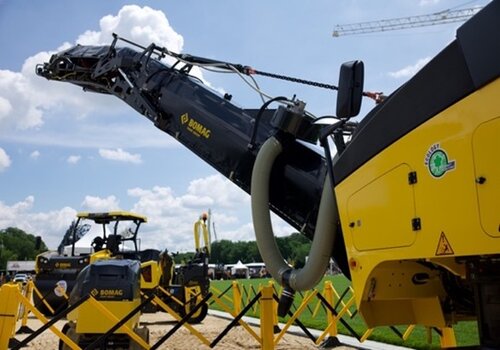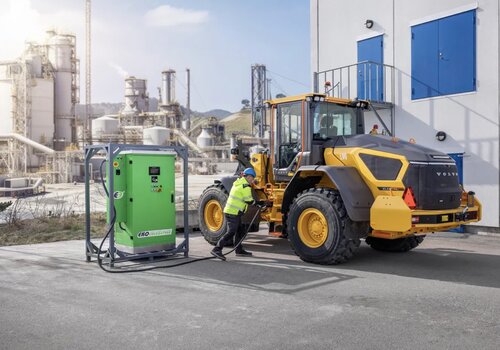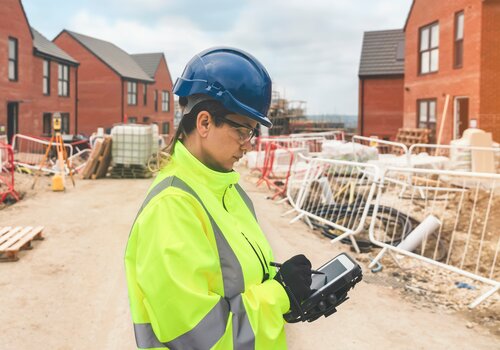The road construction industry is undergoing a significant transformation, thanks to the integration of cutting-edge technologies. These advancements are not only enhancing efficiency and safety but also paving the way for more sustainable and cost-effective construction practices. Three of the most innovative technologies in road construction are autonomous construction equipment, 3D printing and the use of drones for surveying and monitoring.
AUTONOMOUS CONSTRUCTION EQUIPMENT
Autonomous construction equipment is revolutionizing the way we build roads. These machines, equipped with advanced sensors, GPS and artificial intelligence (AI), can operate with minimal human intervention. Autonomous bulldozers, excavators and pavers can perform tasks such as grading, digging and paving with high precision and efficiency.
One of the key benefits of autonomous equipment is increased productivity. These machines can work around the clock without breaks, leading to shorter project timelines. Additionally, they can perform repetitive tasks with consistent accuracy, reducing the likelihood of errors and rework. This lowers labor costs and saves time – a double benefit.
Safety is another significant advantage. Autonomous equipment can operate in hazardous environments, minimizing the risk to human workers. For instance, in areas with unstable ground or extreme weather conditions, these machines can continue to work safely and efficiently. The use of AI and machine learning also allows these machines to adapt to changing conditions and optimize their performance over time.
3D PRINTING IN ROAD CONSTRUCTION
3D printing, also known as additive manufacturing, is making waves in the construction industry. This technology involves creating physical structures by depositing materials layer by layer based on digital models. In road construction, 3D printing offers several advantages, including enhanced design flexibility, reduced material waste and faster construction times.
One of the most exciting applications of 3D printing in road construction is the creation of complex structures such as bridges and overpasses. Traditional construction methods often involve extensive formwork and scaffolding, which can be time-consuming and labor-intensive. With 3D printing, these structures can be built more efficiently and with greater precision. This not only speeds up the construction process but also reduces the need for manual labor.
3D printing also promotes sustainability. By precisely controlling the amount of material used, this technology minimizes waste and reduces the environmental impact of construction projects. Additionally, 3D-printed structures can be designed to incorporate recycled materials, further enhancing their eco-friendliness.
DRONES FOR SURVEYING AND MONITORING
Drones, or unmanned aerial vehicles (UAVs), are becoming indispensable tools in road construction. Equipped with high-resolution cameras and LiDAR sensors, drones can capture detailed aerial imagery and generate accurate 3D models of construction sites. This data is invaluable for surveying, monitoring and managing construction projects.
One of the primary benefits of using drones is their ability to conduct surveys quickly and accurately. Traditional surveying methods can be time-consuming and require significant manpower. In contrast, drones can cover large areas in a short amount of time, providing real-time data that can be used to make informed decisions. This not only speeds up the surveying process but also reduces costs.
Drones are also highly effective for monitoring construction progress. They can capture images and videos of the site at regular intervals, allowing project managers to track progress and identify potential issues early on. This proactive approach helps to prevent delays and ensures that projects stay on schedule.
Drones can enhance safety by reducing the need for workers to access hazardous areas. For example, drones can inspect bridges and overpasses, capturing detailed images that can be used to assess structural integrity without putting workers at risk. This not only improves safety but also provides more accurate and comprehensive data.
The integration of autonomous construction equipment, 3D printing and drones is transforming the road construction industry. These technologies enhance productivity, improving safety and promoting sustainability. As the industry continues to evolve, embracing these innovations will be crucial for staying competitive and delivering high-quality infrastructure projects.
For construction workers, staying informed about these advancements is essential. By understanding and leveraging these technologies, you can contribute to more efficient and effective road construction projects. The future of road construction is bright, and with these innovative technologies, we are paving the way for a smarter, safer and more sustainable industry.
Photo credit: BELISH/BIGSTOCKPHOTO.COM












